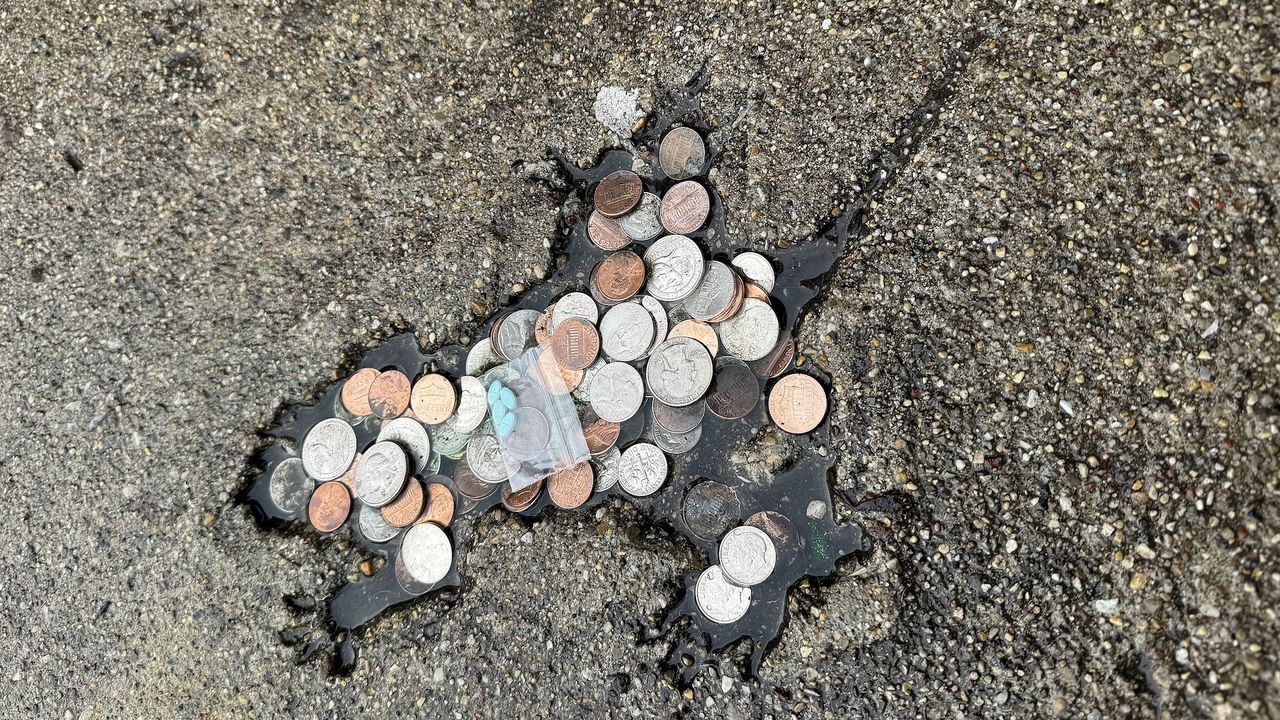
A rat-shaped indent on a Chicago sidewalk went viral early last year, with troves of people venturing to the hole bearing coins and other offerings. However, a new study suggests the so-called "Chicago Rat Hole" wasn't actually made by a rat — it was probably the imprint of a squirrel.
By comparing characteristics of the hole with information about the local rodent populations, researchers determined that a squirrel most likely made the impression. The study was published Wednesday (Oct. 15) in the journal Biology Letters.
"Just like everyone else, I looked at it like, 'Yep, that's a rat,'" study lead author Michael Granatosky, an evolutionary biomechanist at the University of Tennessee, Knoxville, told Live Science. "But just assuming something is not the best way to actually do science."
The hole, a well-preserved imprint of a rodent's death in wet concrete, was around for decades before it went viral. It became a tourist attraction in 2024 after the Chicago-based artist and comedian Winslow Dumaine posted about its existence on the social platform X.
Had to make a pilgrimage to the Chicago Rat Hole pic.twitter.com/g4P44nvJ1fJanuary 6, 2024
"Squirrels are a lot more TV-ready than rats are," Dumaine told Live Science. "But I do think the fact it was dubbed a rat hole was a key part in why it became popular."
As the researchers came across pictures of the hole on social media, some felt it didn't look "super rat-like," senior study author Edwin Dickinson, an archaeologist at the University of Calgary, told Live Science. It also seemed unlikely a rat could have made such a cast on wet concrete without also leaving footprints leading up to it. These suspicions drove researchers to analyze the hole more deeply.
Using the citizen science app iNaturalist, which catalogues local fauna, the study authors identified possible animals that could have made the hole. They knew, from the indent, that it had to be an animal with four legs, five-clawed feet and a tail.
Then, it was all a matter of proportion. The study authors didn't have a chance to measure the hole itself, which city officials removed in April 2024, citing the disturbance crowds were bringing to the Roscoe Village neighborhood. However, they were able to get precise measurements thanks to the many pictures people had posted of the imprint alongside coins and other items.
The researchers compared their measurements to specimens at the American Museum of Natural History. A statistical analysis of this data showed a 98.7% likelihood the hole was made by either an eastern grey squirrel (Sciurus carolinensis) or a fox squirrel (Sciurus niger) .
In light of this finding, the scientists suggested rechristening the rat hole as the "Windy City Sidewalk Squirrel" to better represent its origins.
The authors hope the study will help people see the fun in science.
"The rat hole might be the medium, but the idea that we're hoping to perpetuate in this study is… there's nothing too inherently complicated or scary about following the scientific method," Dickinson said. "It is something that we can all use in our lives."







